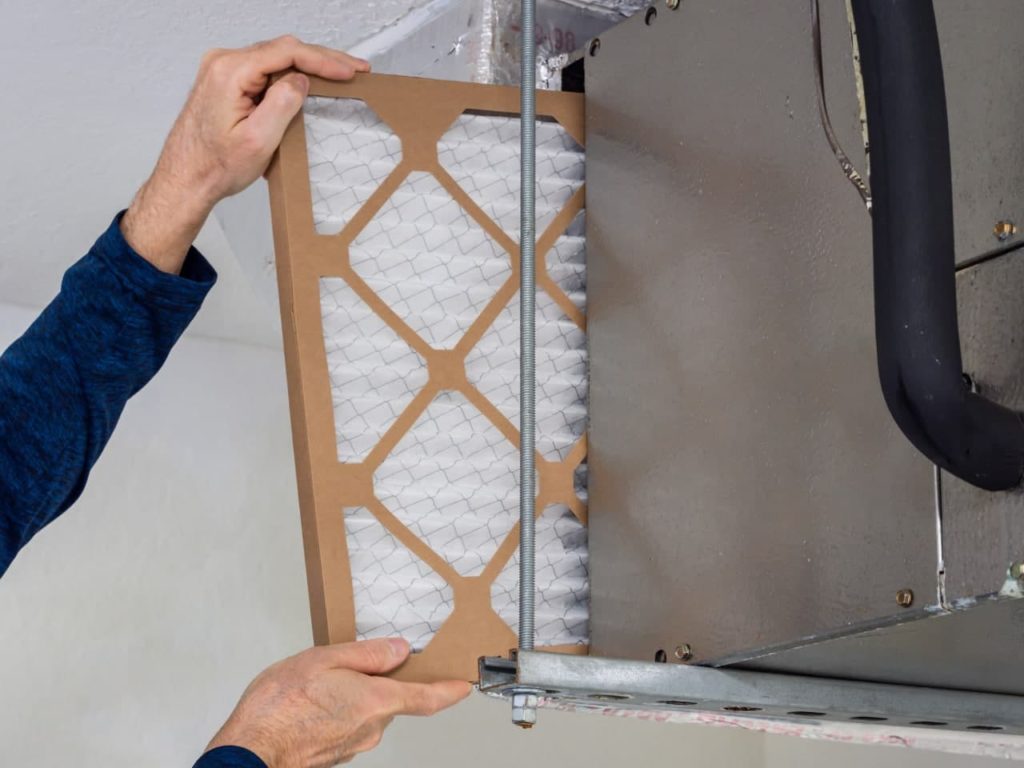Why is Changing Your Furnace Filter Important?
Maintaining a warm and comfortable indoor environment is crucial during cold winter months, and one of the most important aspects of that comfort is your furnace. While many homeowners pay close attention to their furnace’s performance, they may overlook a crucial component that helps keep the system running efficiently: the furnace filter. In this article, we will explore the importance of changing your furnace filter and why it should be a regular part of your home maintenance routine.
For the best furnace air filters to buy click here.

What is a Furnace Filter?
A furnace filter is a replaceable component of your heating and air conditioning system that removes particles and contaminants from the air that circulates through your home. The filter is designed to trap dust, dirt, pollen, pet dander, and other airborne particles that can harm your family’s health and comfort, as well as clog your furnace and reduce its efficiency. Furnace filters come in different sizes, materials, and efficiency levels, but they all perform the same basic function.
Why is Changing Your Furnace Filter Important?
-
Improved Indoor Air Quality: By removing particles from the air that you breathe, a clean furnace filter can help improve the indoor air quality in your home. This is particularly important for people who suffer from allergies or respiratory problems, as clean air can help reduce symptoms and promote a healthier environment.
-
Better Furnace Performance: A clogged furnace filter can cause your furnace to work harder to circulate air, which can lead to decreased efficiency, higher energy bills, and a shorter lifespan for the system. By changing the filter regularly, you can help ensure that your furnace is working at its best and running smoothly.
-
Increased Safety: A dirty furnace filter can also be a fire hazard. As the filter becomes clogged, it can cause the furnace to overheat, which can pose a significant risk to your family and home. By changing the filter, you can help prevent this potential safety hazard and keep your home and family safe.
-
Lower Energy Costs: A clogged furnace filter can also lead to increased energy costs, as your furnace will have to work harder to circulate air and maintain the desired temperature. By changing the filter regularly, you can help reduce your energy bills and keep more money in your pocket.
When Should You Change Your Furnace Filter?
The frequency with which you should change your furnace filter depends on several factors, including the type of filter you have, the number of people in your home, and the level of air pollution in your area. In general, it is recommended that you change your furnace filter at least once every three months. However, if you have pets, suffer from allergies, or live in an area with high levels of air pollution, you may need to change your filter more often.
If you’re unsure about how often you should change your furnace filter, consult your furnace’s owner’s manual, or reach out to a professional HVAC technician for guidance. They can help you determine the best schedule for changing your filter and keep your heating and air conditioning system running efficiently.
Conclusion
In conclusion, changing your furnace filter is a simple and straightforward task that can have a significant impact on your home’s comfort, health, and safety. By removing particles and contaminants from the air, a clean furnace filter can improve your indoor air quality, increase your furnace’s performance and efficiency, reduce your energy bills, and keep your home and family safe. So make sure to add this important task to your home maintenance routine and keep your furnace running smoothly.
For the best furnace air filters to buy click here.
If you need any Heating & Cooling Services in the Metro Detroit area contact us!
Next Post

Leave a Reply